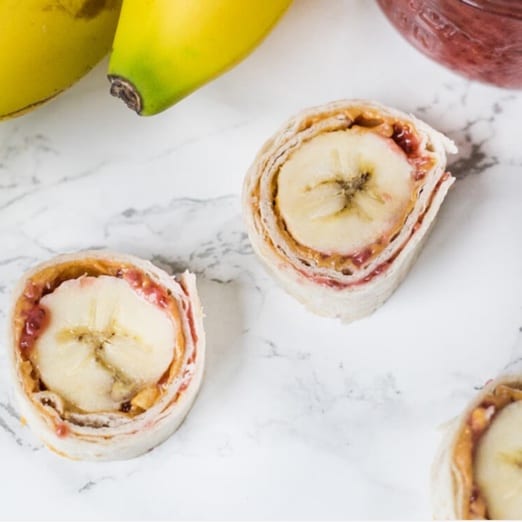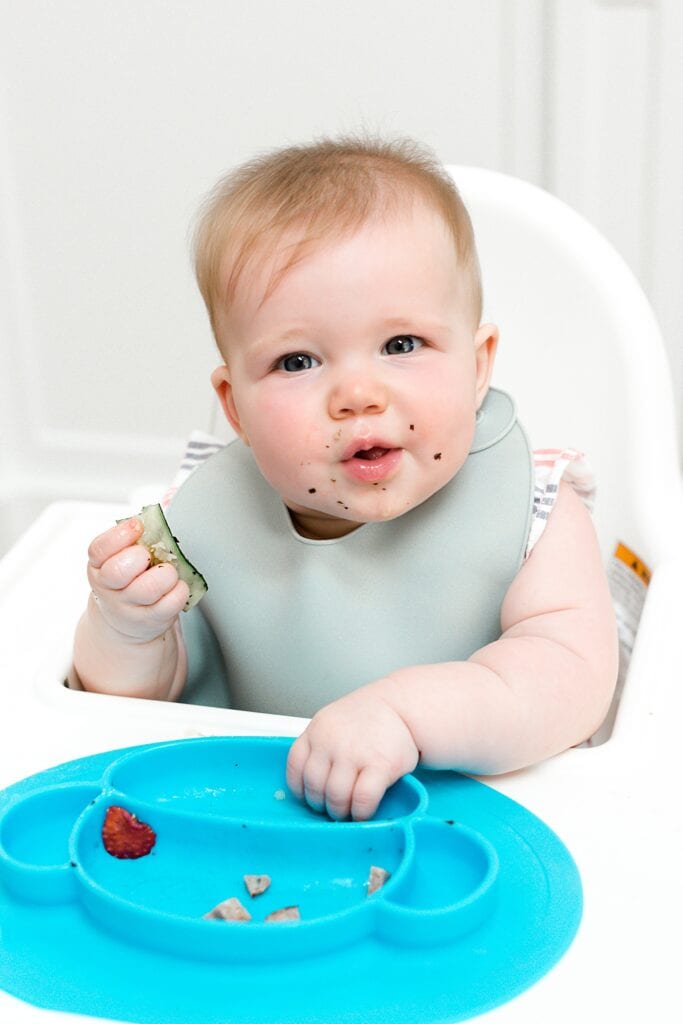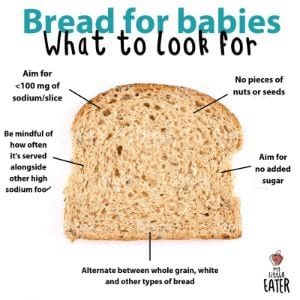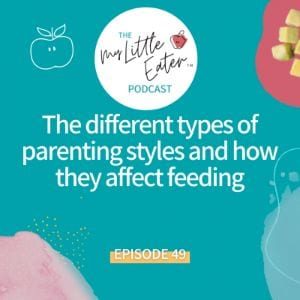![Main image for the article [Top 3 Strategies for Serving Dessert to Kids]. Pictured is a toddler eating an ice cream cone.](https://mylittleeater.fixed-staging.co.uk/wp-content/uploads/2020/04/New-Blog-Post-Image-Size-8-300x300.png)
Did your parents ever use dessert as bait to get you to eat any vegetables you just weren’t interested in eating? Have you done it to your kids? I mean, on one hand…it could be considered a genius strategy…every kid wants the “prize” at the end of their meal, so it can definitely serve as a means to get kids to finish their meal.
But… here I am again to shed some light on why this is NOT the strategy I go with, or teach. Instead, I’m going to give you some much better, long-term strategies for serving dessert to kids that will have far better outcomes.
Why making dessert a prize to be won is not a great strategy
Here’s why offering dessert as a prize at the end of a meal could be harming your child’s progress with eating, especially if you’re dealing with a picky eater.
First off, it sets dessert up as a more special food than others. Only the best things get given out as prizes right? So here’s what a child will think… “Dessert is for sure better than those vegetables you’re trying to make me eat. In fact… those veggies? They’re like the sacrifice I need to get through to get to the good stuff”. See what I mean? And so, it’s not surprising when we end up with dessert obsessed kids. We’ve taught them that dessert is better than the meal!
Second of all, it ties dessert (and eating in general) to moral behaviour. You were good and ate all of your food? You deserve dessert. You were bad and didn’t eat it all? No dessert for you. That’s not what we want to teach our kids! What we eat or don’t eat isn’t tied to us being a good or bad person. Sometimes we eat a little, sometimes we eat a lot, and that’s all based on our appetites. Sometimes we have a child who has serious picky eating problems and can’t eat something. That doesn’t mean they are bad kids! Instead of helping them learn how to eat it, we guilt them into doing so, all in the name of nutrition (and then reward them with sugary food at the end, which makes no sense haha). It also teaches kids to reach for something sweet whenever they’ve been “good” that day (you know that “I deserve this” thought we all get when we want to reward ourselves for something?). Yeah…let’s avoid that.
The truth is, dessert is so much more than a ploy to get your child to eat their meal, and when it’s given, it should be given to bring enjoyment and pleasure, all while allowing your child to learn how to regulate treats properly. After all, sugar and desserts are everywhere! We can’t avoid them, so teaching our children how to incorporate them healthily into their diets in structured ways (just like any other food) is crucial in helping them make their own smart choices as they get older.
When we think of dessert, we think of low nutrient, salty or sugary foods, and given this, we often assume there isn’t an important role for desserts or sweets in our child’s diet. But, dessert should be an important aspect of a healthy diet and brings a lot of joy to children, and adults too! Food can fuel your body physically with the right nutrients and vitamins for growth, but desserts can also help fuel your body emotionally, bring people together, and create a sense of enjoyment. Dessert doesn’t have to be a food we serve super frequently or something we avoid altogether. There are some key strategies that I’d like to teach you that can help you include dessert in your child’s diet in a balanced way, all while helping them create a healthy relationship with treats and sugar! Desserts should be served with structure and consistency to help teach your child how to regulate sweets as early as possible, so that they carry these skills with them into older childhood.
Rest assured, I’ve got you covered with my top 3 tips for how to handle desserts the right way!
#1. Serve it up regularly (and offer it to everyone)
Ever notice your child always wants what they can’t have? Heck…adults are like this too. If your kids never, ever see dessert (or “treat” foods) present or accessible in the house…you better bet they’ll go crazy when they do finally run into it outside of the home, and they wouldn’t have had any practice handling it and eating it mindfully.
Dessert doesn’t have to be something that is labeled as a bad food, or a forbidden food item. If your family chooses to serve it, then serving it regularly may be helpful in ensuring your child builds that healthy relationship with food we always aim for! Regularly is a loose and subjective term. For some families, this could mean 1-2 times/week. For other families who have always had dessert growing up, maybe 3-4 times/week is better. For others, it could mean once every couple of weeks. Whatever the right amount may be for you and your family, following a structure of when you’ll be serving it is really helpful so your child can expect it will come around in the meal plan rotation. This helps them to feel confident that they will have access to it without having to go crazy binging on it when they encounter it outside of the home!
It is very important to note that, if it’s offered at all, it’s offered to everyone regardless of how much, or what they ate, for their main meal. It’s not fair to let one family member enjoy a dessert and then restrict another one. This is a form of pressure, and pressure always backfires in the long run. Also, keep in mind that the decision to serve dessert, or not, stays with you. It’s served because you put it on the menu, not because your child asked for it, or again, because they “deserve” it.
#2. Serve a small portion of dessert with a meal
I bet you think I’m crazy right? I get it all the time when I tell parents to try this! But with time and patience this is a great way to approach desserts! And since it’s served with the meal, they can eat it first, last, or have bits in between. It is their choice! Serving your child dessert with the meal removes the feeling of it being a reward, and levels the playing field between that type of food and other types of foods, making it seem not so special and just like any other food you would serve. Separating it deems it a special food and can cause them to over-eat their meal just so that they can have dessert once their meal is done, or conversely, skip eating their meal to quickly get to the dessert at the end. This prevents your child from eating mindfully and makes them focus on the end goal of getting that dessert, which may make them eat more or less than they would usually eat, ignoring their hunger and fullness cues.
Instead, serving the meal and dessert together can help them self-regulate by letting them decide when they’re full, regardless of an outside stimulus. If you decide to test this tip out, you’ll likely notice your child will automatically fill up on the dessert first, especially the first few times you serve it this way. Although it may seem counteractive, this is the first step to teaching them that desserts aren’t as special as we once made them to be, and they will lose their extreme appeal factor.

If you want to try implementing this, here’s my tip for you! Only dish out one serving of dessert for each person with no option for seconds. Once the dessert is finished, I recommend redirecting them to the other food on the table. Once your child starts to realize that seconds aren’t offered, they will start to gravitate towards not eating the entire serving first and spacing it out over the entire meal so they get to enjoy it longer. Trust the process, it will take time for them to adjust to this, but know that they’ll be getting nutrition from at least one source, and will start to be less prone to eating the dessert first as time goes on.
#3. Change up the idea of what is considered a dessert!
I want you to rethink your idea of dessert! Dessert doesn’t have to be cake, cookies, ice cream, or soda. Dessert is what you make it, and can be anything that signals the end of a meal. Although it’s more typically something sweet, really, the definition of dessert is different for everyone, and varies in different parts of the world. For example, cheese, nuts, and even just simply a cup of coffee (for adults) can be considered dessert.
There are many things you can do to elevate nutrient dense, naturally sweet foods, like fruits for example, that can be viewed more as a dessert. Some examples of easy and more nutrient dense desserts are:
- Dates filled with natural almond or peanut butter
- Apple slices with a drizzle of honey
- Yogurt covered blueberries (make sure to serve these quartered if your child is under 4)
- Smoothie pops
- Flavoured yogurt
- Granola bar with chocolate chips
- Savoury muffin with cheese and veggies
- Sweet flavoured overnight oats
At the end of the day, when you choose to serve dessert, what you choose to serve, and how often you choose to serve it, are all choices you have to make collectively as a family and can give balance to your mealtimes. These tips can help make dessert an actual teaching tool and help you integrate it successfully into your child’s diet without constant battles. My Feeding Toddlers online course has more information about how to integrate these tips, and can help you be sure that you’re creating a positive balance in your child’s diet.
Let’s work together to help your toddler become a confident and adventurous eater!
If you want more details on:
- How to teach your child how to develop a healthy relationship with all foods
- How to foster adventurous eating and overcome picky eating
- What foods to serve toddlers to ensure they’re healthy and ensure proper nutrition
- How to manage mealtime behaviour and confidently parent at mealtimes
Then check out my Feeding Toddlers online course!
Enroll now and start the journey with me!










